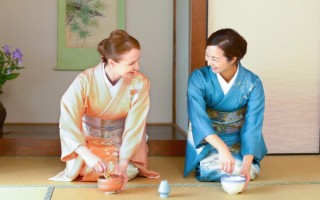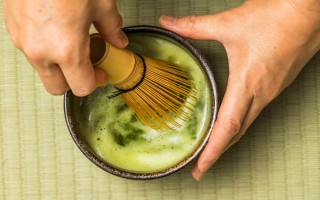Loading
Search
▼ Learning Japanese Tea Ceremony As A Foreigner
- Category:Other
Since moving to Japan, I have studied the Urasenke style of sado, or chado (Japanese tea ceremony) in Shimane Prefecture.
My original goal was simply to learn about the matcha culture of Matsue (Shimane’s capital).
Still, the fun of this traditional art and encouragement from my teacher and fellow students have inspired me to learn the Japanese tea ceremony and aim for instructor qualifications.
If you are considering practicing sado while living, working or studying in Japan, here are some insights from my journey to help you get started.
Tea Ceremony at a Glance
Sado embodies key parts of Japanese culture such as hospitality, appreciating the seasons and treasuring the present moment.
In addition to memorizing sets of temae (traditional preparation procedures), sado students learn how to coordinate items such as teaware, flowers and wagashi (Japanese sweets) to create a tea ceremony that evokes the essence of a season’s or occasion’s beauty.
There are dozens of sado styles, including:
To me, sado is like a moving meditation that allows me to step away from a busy day and focus on making matcha. I believe anyone interested in Japan’s traditional culture searching for a way to relax can benefit from sado lessons.
Your Journey to Japanese Tea Ceremony
Before you enter the world of sado, there are a few things to know and consider:
Finding a Class
A teacher is your best guide. Here are some tips for finding one:
My original goal was simply to learn about the matcha culture of Matsue (Shimane’s capital).
Still, the fun of this traditional art and encouragement from my teacher and fellow students have inspired me to learn the Japanese tea ceremony and aim for instructor qualifications.
If you are considering practicing sado while living, working or studying in Japan, here are some insights from my journey to help you get started.
Tea Ceremony at a Glance
Sado embodies key parts of Japanese culture such as hospitality, appreciating the seasons and treasuring the present moment.
In addition to memorizing sets of temae (traditional preparation procedures), sado students learn how to coordinate items such as teaware, flowers and wagashi (Japanese sweets) to create a tea ceremony that evokes the essence of a season’s or occasion’s beauty.
There are dozens of sado styles, including:
- Urasenke: One of the most renowned styles, Urasenke boasts certified teachers worldwide and a prestigious tea college in Kyoto. Urasenke is known for preserving tradition while also embracing innovation.
- Fumai-ryu: This lesser-known style originated in Matsue, Shimane Prefecture. Matsudaira Fumai, the seventh feudal lord of Matsue, developed it.
- Omotesenke: Another prominent sado style, Omotesenke strives to preserve tea traditions and emphasizes the aesthetics of simplicity. It is a graceful and refined tea ceremony.
- Mushanokojisenke: One of the most famous sado styles, alongside Urasenke and Omotesenke, Mushakojisenke embraces rusticity and understated beauty. Its temae are more streamlined than those of other styles.
To me, sado is like a moving meditation that allows me to step away from a busy day and focus on making matcha. I believe anyone interested in Japan’s traditional culture searching for a way to relax can benefit from sado lessons.
Your Journey to Japanese Tea Ceremony
Before you enter the world of sado, there are a few things to know and consider:
Finding a Class
A teacher is your best guide. Here are some tips for finding one:
- Local Resources: Some Japanese language schools, such as the Kudan Institute of Japanese Language & Culture, Human Academy Japanese Language School or JSL Nippon Academy, provide basic sado lessons. If you are a university student in Japan, check if your school has a sado club or class that you can join. Community centers may also offer sado classes to local residents.
- May 31, 2024
- Comment (0)
- Trackback(0)




